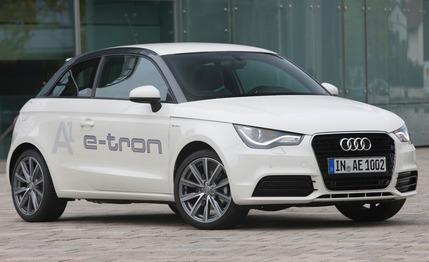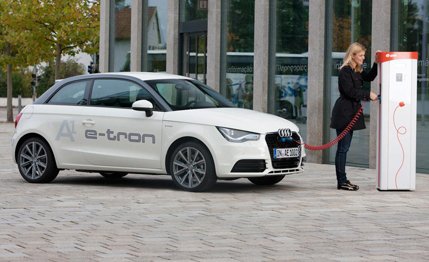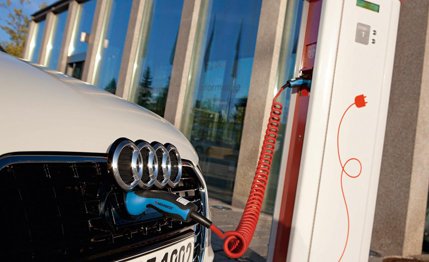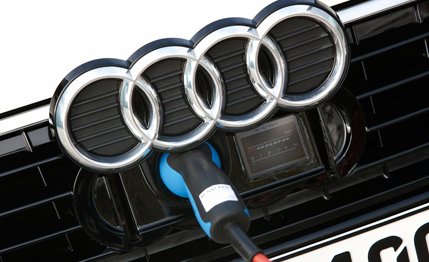 First Drive Review
First Drive Review
It used to be that the phrases “fun to drive” and “electric car” were mutually exclusive, with no real hope for reconciliation—heck, seeing the phrases “regular production” and “electric car” so close together is still a novelty. Then came the Tesla roadster. Now, witness the 525-hp Mercedes-Benz SLS E-Cell, which its maker will sell to the driving public at a speculated $250,000 per, and the somewhat cheaper but still out-of-reach Audi e-tron sports car, which should cost about $150,000 when production begins in 2012.
Clearly, the game is afoot. The true revolution, though, will be with cars for everyday people; cars like the Chevrolet Volt, the Nissan Leaf, and this. The third in Audi’s e-tron concept family, this one is—surprise!—based on the A1. It was envisioned as a “mega city vehicle”—a small, agile, ostensibly affordable car with all-around daily usability and four full-size seats. Basically, the ideal urban commuter, with the added benefit of being a car that wouldn’t be totally distasteful to enthusiasts.

This A1 is propelled by a transverse synchronous electric motor, mounted up front and low in the chassis. It draws power from a 12-kWh lithium-ion battery pack mounted beneath the floor and has a continuous power output of 61 hp and 111 lb-ft of torque. Just like the Porsche 911 Turbo—okay, maybe not just like it—it is capable of generating even more power in short bursts, up to 102 hp and 177 lb-ft. According to Audi, 0-to-62 mph plays out in 10.2 seconds and top speed is pegged at 80 mph.
Range Extended
On their own, the battery and the electric drive are good for about 30 miles, which Audi deemed suitable for the average city dweller’s daily commute. A fully discharged battery needs about three hours to charge if plugged into a 220-volt outlet, or twice that on a 110-volt source. For greater distances, the A1 carries a gas-fired 254-cc single-rotor Wankel engine that can be used to charge the battery. The rear-mounted engine has no direct link to the wheels and is used solely as a generator. And unlike the rotary in your RX-7, you can’t hear it running. The range extender stretches, um, range to about 155 miles. With the rotary charging the battery pack, Audi says the A1 e-tron returns a cruising equivalent of 124 mpg on the European cycle. Fuel capacity is just over three gallons.

The front wheels are driven by a single-stage transmission attached directly to the motor. With no gears to shift, acceleration is completely linear. Inside the cockpit, the shifter selects between four modes: D, R, N, and range. Hopefully, the first three are familiar. “Range” activates the rotary engine, which the driver can turn on and off at will unless the battery is discharged, in which case it remains on.
Just Another EV, Which Is to Say, “Endearing”
Predictably, the driving experience in the A1 e-tron is utterly unlike that of a traditional internal-combustion vehicle. For something with so little power, it launches with great enthusiasm. The nearly total lack of powertrain noise as you shoot down the road is somewhat disconcerting, the loudest sounds coming from the wind and the asphalt itself. You get accustomed to the futuristic whoosh quickly, though, and stomping on the “gas” gets addictive.
We found the A1 e-tron surprisingly playful and a willing dance partner when the urge strikes to start throwing it around. The steering is direct, the brakes adequate and easily modulated. You would hardly know it’s electric if it weren’t for the lack of noise. Off power, the A1 e-tron displays the aggressive deceleration typical of EVs—that’s the motor harvesting energy to feed the battery—but the sensation of drag is hardly as extreme as that of the purely electric Mini E. How aggressively the A1 recharges itself under deceleration is adjustable using the wheel-mounted paddles, with your chosen setting indicated in the suitably futuristic LCD instrument panel.

Audi isn’t talking production yet, but the test fleet of 20 vehicles that the company has deployed in and around Munich—along with a support network of dedicated charging stations—is a good indicator that Audi is serious about the project. With a conventional hybrid Q5 and the R8-esque e-tron imminent, Audi has made it clear it will explore multiple avenues for electrification—and this car certainly widens the audience more than an electric supercar would.